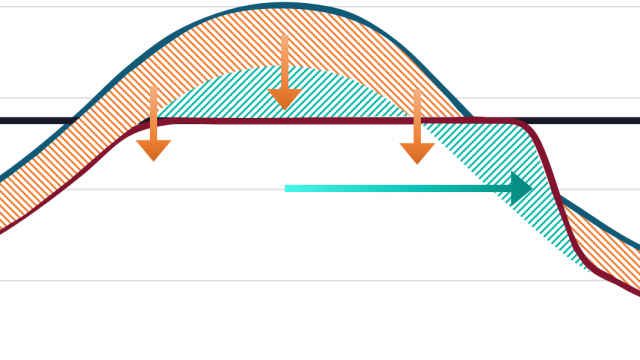Realising the value of reducing electricity consumption in the home
Published September 2021
In his previous blog, Benjamin Lock wrote about how energy efficiency can help avoid distribution network constraints, and why this unglamorous yet effective technology deserves more attention. Now it’s time to get a bit more specific. How much is domestic energy efficiency actually worth? And how do we unlock its potential?
Everoze has been working with Western Power Distribution and Smart Grid Consultancy on Future Flex – an NIA-funded innovation project looking at answering exactly these questions. Here’s what we’ve found out.
Less is (worth) more
The basic financial benefit of using less energy is so obvious it needs no explanation. But reduced energy efficiency offers more than just reduced energy bills. Our previous blog explained how EE helps reduce network constraints by flattening peak demand. Here we will explore how this translates into a pound sign.
Avoiding network constraints is one of the core functions of our distribution network operators and is something that comes at a cost – either through short term active management such as flexibility services or long-term investment in infrastructure reinforcement. By reducing network loads, energy efficiency avoids some of this cost and so has a network value.
How much? Handily, we’ve conducted some analysis to find out, taking real-world data on the effect of household energy efficiency improvements from the government NEED database, combining it with half-hourly domestic consumption profiles and mapping this to WPD’s known constraint alleviation costs.
Here’s what it told us:
Energy efficiency could deliver an overall network value of up to £1,000 per home in the right circumstances. There are clear network benefits, but their scale varies widely depending on three primary factors: the severity of the network constraint, its duration, and the type of heating installed in the home. When these all come together, energy efficiency could deliver a network value of £1,000 per home over its lifetime.
The size of the home and the type of energy efficiency measure are less important than the nature of the constraint and the heating type. Unsurprisingly, big homes can realise more value, and the energy efficiency measure selected has an impact too. But it is homes in the right network zone with heat pumps or conventional electric heating that have the greatest potential.
Homes with high network value are uncommon but geographically clustered. Network constraints are inherently local: they can only be addressed by actions taken within the network area that is constrained. There are also locational trends in housing stock and tenure, meaning the current potential for energy efficiency is clustered in certain zones. These are the places we need to focus on first.
The difficulties of a simple solution
With so much value on the table, you might be wondering why energy efficiency is not being more directly promoted as a solution for addressing network constraints. This is due to a number of obstacles:
- A maze of funding schemes: Grant funding for energy efficiency exists, but is difficult to navigate, with different local, regional and national schemes that frequently change or even prematurely disappear (looking at you, Green Homes Grant).
- Dispersed benefits: Our ‘network value’ is just a small slice of the pie, but other benefits are shared between different parties, presenting a challenge into how to draw diverse beneficiaries together to offer up a single customer incentive.
- DNO-centric thinking: Framing service procurement around the requirements and timescales of the DNO isn’t well suited to energy efficiency, where we are dealing not with dedicated standalone assets but with technologies installed in people’s homes.
- Uncertainty around the best way to incentivise: We’ve assessed the merits of both operational payments and direct grant funding, but there’s no clear winner. We will likely need to move away from technocratic incentives towards an approach that is local and customer focussed.
- A lack of data: So far energy efficiency grant schemes have been focused on collecting data to illustrate annual reductions in energy consumption. But to fully evaluate the system benefits high-resolution time-series data is needed. We don’t have this yet.
The time to act
To address these issues, we recommend that WPD (and other DNOs) establish collaborative partnerships to deliver major ‘beacon’ energy efficiency schemes with a focus on vulnerable customers, as recommended by Sustainability First. This means large, localised trials designed to address the obstacles described above, investigating the real word network value of reducing energy consumption.
We’ve developed five principles for how to do this successfully, but in interests of space and shameless self-advertisement, you can find them in our briefing paper, available here.
This matters. We must use energy flexibly, but we must also use it sparingly. Energy efficiency should be our first priority, not an afterthought.






